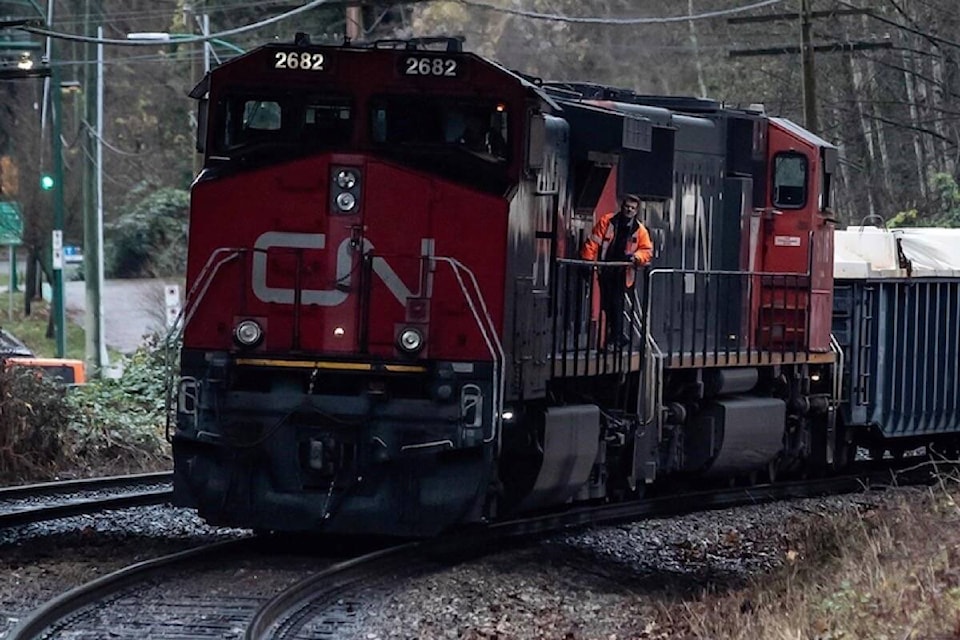The first trains have rolled into Vancouver since flooding and landslides cut key supply links in southern British Columbia, Canadian Pacific Railway Ltd. said.
CP cars loaded with Prairie grain and fuel chugged into the port city this morning after limited service resumed on washed-out tracks.
The Calgary-based company said its rail corridor sustained damage in some 30 locations between Vancouver and Kamloops, B.C., with “significant loss of infrastructure” at 20 of them.
“The coming days are going to be critical to bring the entire supply chain back into sync,” spokeswoman Salem Woodrow said in a phone interview.
Hundreds of employees and contractors have been working around the clock to repair rail lines after torrential rains and mudslides swallowed streets and devastated highways, tossing aside CP railcars and at least one locomotive along the Fraser Canyon near Hope, B.C.
East of Lytton, B.C., tracks remain suspended above a chunk of the Trans Canada Highway that was swept away by a landslide.
Starting Nov. 14, flooding snarled the movement of goods between Canada’s biggest port and B.C.’s Okanagan Valley region, displaced hundreds of residents and stranded thousands, leaving at least four people dead.
Canadian National Railway Co. said Tuesday it also planned to restore “limited” service the next day along its southern B.C. rail corridor.
John Gradek, a transportation expert and former senior manager at CP, says questions remain about traffic capacity in the short term and infrastructure resilience in the long term.
“The track may be open, but they’re still not you carrying the volume they did in the past,” he said of Canada’s two biggest railways.
Stretches of the corridors operated by CP and CN hug the Fraser River east of Vancouver. Others snake through avalanche-prone peaks protected by “snow sheds” — tunnel-like cladding that covers the track — or run along thin plateaus between the river and mountains.
“You had river bed erosion from flooding that created these spaces … so you were literally building on flood planes. You’re building on risky territories when you do that,” Gradek said.
“There may be a need to go back and review the topography of those tracks to understand what kind of infrastructure we can design or build to protect from landslides.”
